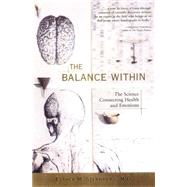
Note: Supplemental materials are not guaranteed with Rental or Used book purchases.
Purchase Benefits
What is included with this book?
| Preface | p. xi |
| Emotions and Disease: Molecules and Ancient Myths | p. 1 |
| Where Do Emotions Come From? | p. 15 |
| The Dirty Soup Beyond Our Skin: How the Immune System Defends Against the Outside World | p. 39 |
| Putting the Mind and Body Back Together Again | p. 55 |
| It's a Two-Way Street: The Immune System Talks to the Brain and the Brain Talks Back | p. 79 |
| When the Brain-Immune Communication Breaks Down | p. 93 |
| Can Stress Make You Sick? | p. 109 |
| Connecting to Others: Relationships and the Course of Disease | p. 133 |
| Can Believing Make You Well? | p. 159 |
| How the Immune System Changes Our Moods | p. 181 |
| Prometheus Unbound: What Does the Future Hold? | p. 197 |
| Bibliography | p. 213 |
| Index | p. 233 |
| Table of Contents provided by Syndetics. All Rights Reserved. |
The New copy of this book will include any supplemental materials advertised. Please check the title of the book to determine if it should include any access cards, study guides, lab manuals, CDs, etc.
The Used, Rental and eBook copies of this book are not guaranteed to include any supplemental materials. Typically, only the book itself is included. This is true even if the title states it includes any access cards, study guides, lab manuals, CDs, etc.